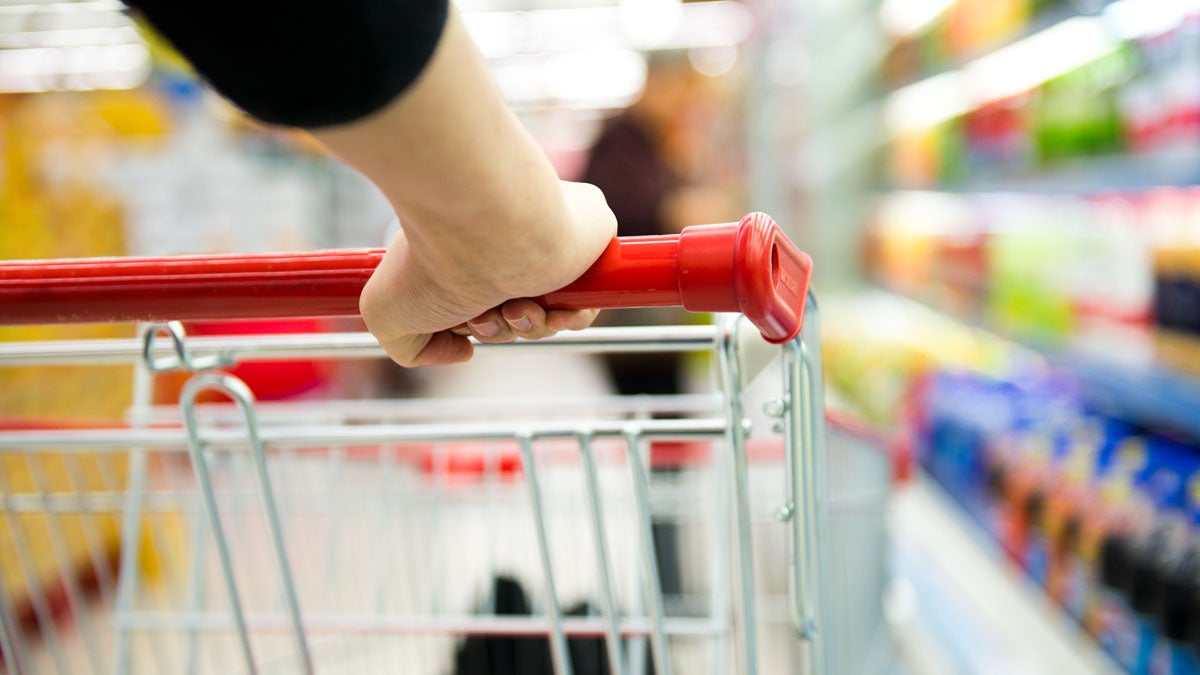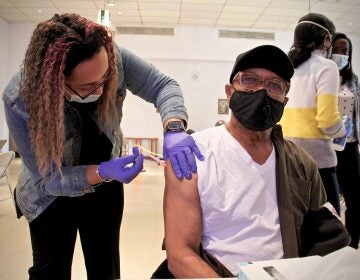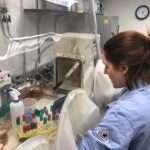In anxious times, stocking up on stuff is just a natural human response
Many of us are burrowing in for a few weeks of social distancing as the virus amps up anxiety levels everywhere. Shopping helps, an expert says.

Many of us are burrowing in for a few weeks of social distancing as the virus amps up anxiety levels everywhere. Shopping helps, an expert says. (ShutterStock)
Store shelves are emptying of things like hand sanitizer, toilet paper and canned goods. We expect this sort of thing when a snowstorm is heading our way. But now, many of us are burrowing in for a few weeks of social distancing because of a virus that’s amping up anxiety levels everywhere.
This need to stock up — resulting in exhausted inventories known as stockouts — can be annoying, even scary in their own right. But it’s a pretty natural response, said Deborah Small, a professor of marketing and psychology at the University of Pennsylvania.
“Anxiety, panic, fear are functional. We have them for a reason — as human beings, they motivate protective action,” Small said.
If something appears to be in short supply, people fall into a vicious cycle. As Small described it, “the initial panic, desire for control, and then panic not about the original issue, but panic that everybody is else is going to buy everything.”
Especially when we’re faced with a virus too small to see and the thought of contagion all around, buying things can make us feel in control, she said. Staying home and washing our hands doesn’t offer tangible rewards in the same way that buying a 24 pack of Lysol wipes does.
Other activities, like cooking, can help. But shopping, “having stuff — stuff makes you feel in control,” Small said. “Knowing that, that [it] won’t be uncertain, you’re not going to run out of toilet paper this week.”
But especially with things like hand sanitizer, it’s best to try not to panic: “I’m not the first to point out if you have all of it, and other people can’t get it, then they’re going to be more likely to spread something to you if they don’t have access. The best outcome for all is if everybody has access,” Small said.
Soap does an excellent job at inactivating and removing the coronavirus, experts say. But, if you’re chasing that feeling of control and you can’t buy hand sanitizer, feel free to make your own. You might even like it more. We prefer things we make, according to Small, in something experts call the Ikea effect.
Pardeep Gupta, a professor of pharmacy at the University of the Sciences, offered some advice for aspiring home chemists.
“Hand sanitizers are primarily alcohol-based,” said Gupta, “they basically deactivated the proteins that are associated with viruses and bacteria that are essential for their viability.”
Isopropyl alcohol — aka rubbing alcohol, a key ingredient in hand sanitizer — can be hard to find these days too. But as anyone over 21 already knows, there’s alcohol and then there’s alcohol. Pennsylvania’s wine and spirits stores will be closed effective Tuesday, March 17, in some local counties, but in the meantime …
“The alcohol we use for drinking and in alcoholic beverages contains ethyl alcohol, also called ethanol. It is a different chemical structure than isopropyl alcohol. They’re both equally effective as hand sanitizers,” Gupta said.
Commercial sanitizer is formulated to be strong, but not too strong. So that’s something you need to consider when you make your own. If you have rubbing alcohol at hand, this is just some simple math.
“Typically alcohol, isopropyl alcohol, is available in three concentrations, 70%, 91% and 99%. So if it is 70% it’s ready to use, it is a hand sanitizer. If it is 91%, you can add 20% water to it. If it is 99% or 100% you can add one-third water,” Gupta said. Twenty percent water equates to four parts alcohol and one part water.
But if you’re getting your alcohol in the form of spirits, you’ll need to pick your alcohol carefully. Look for something high proof. Proof is a term used in spirits that has its roots in old England, but for all intents and purposes, proof is twice the alcohol content.
So that dusty bottle of Fireball at the back of your cupboard isn’t going to cut it — it’s only 66 proof. And many common spirits, even vodka, aren’t alcoholic enough. You would need an alcohol of at least 120 proof to achieve the magic 60% alcohol by volume.
Think about using a high-proof grain alcohol. Brands like Everclear offer a 120, 151, 189 and 190 proof. Any of these would work. If you choose 189 or 190 proof, treat them like 91% rubbing alcohol.
“Commercial hand sanitizers also contain a color, fragrance and thickening agents, but they have nothing to do with the effect, they’re just there for aesthetic reasons,” said Gupta.
Because alcohol takes water from your hands, when it evaporates, it can leave your hands feeling dry. To combat this, companies add propylene glycol or glycerin. A common household replacement is aloe vera, but Gupta said that isn’t quite as good because it doesn’t sink into the skin.
If your hands start to feel particularly parched, you can moisturize, provided you don’t do it constantly, Gupta said: Hand sanitizer needs clean hands to work, so only moisturize when you need to. The benefits of virus-free hands far outweigh the risk of having dry hands.
WHYY is your source for fact-based, in-depth journalism and information. As a nonprofit organization, we rely on financial support from readers like you. Please give today.


![CoronavirusPandemic_1024x512[1]](https://whyy.org/wp-content/uploads/2020/03/CoronavirusPandemic_1024x5121-300x150.jpg)



